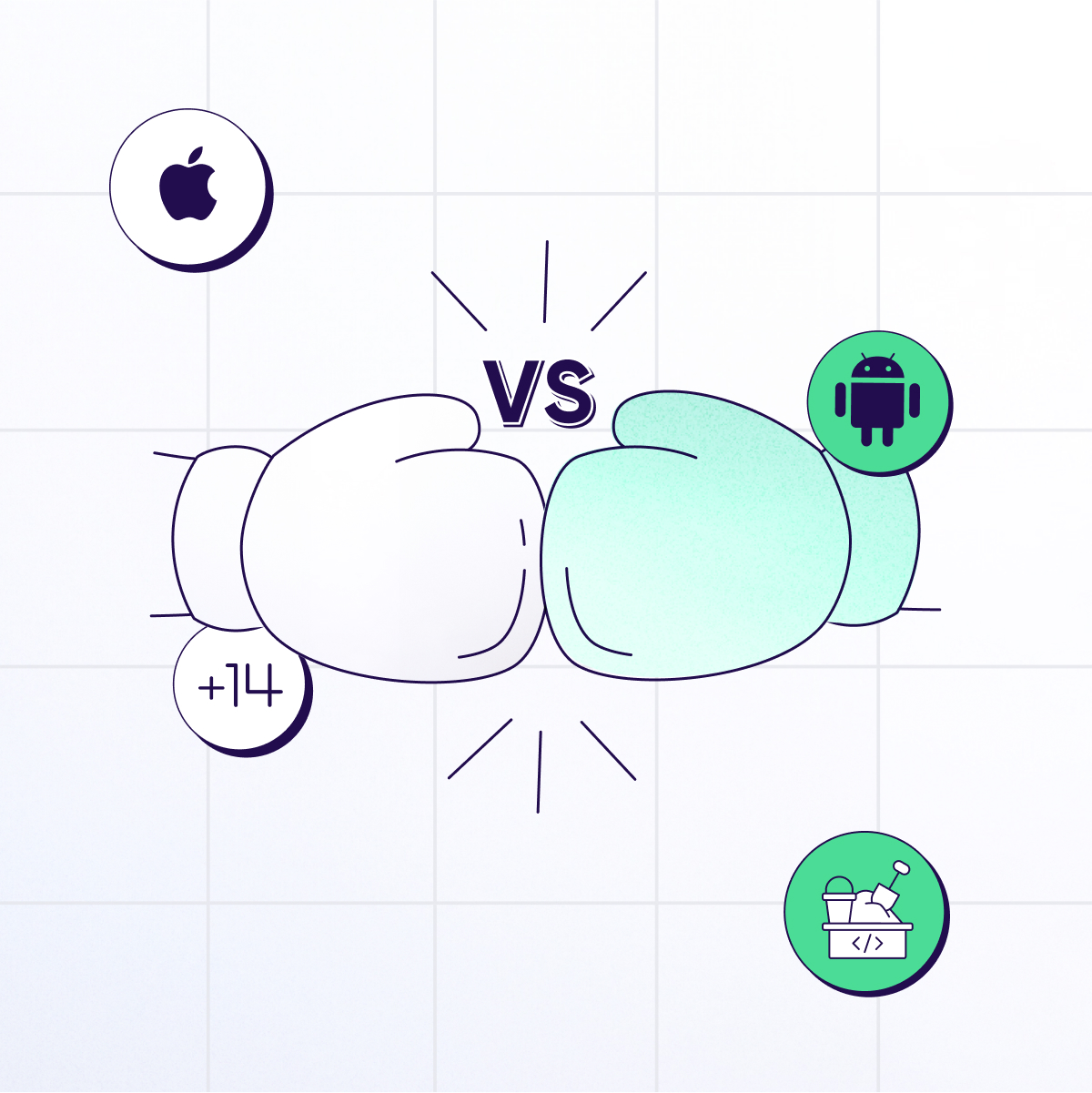
How to break your addiction to user level data – From user level centric to aggregate

Embrace change – It’s all about the right mindset
Apple’s privacy changes were and still are a major challenge for app marketers. But what we all tend to forget sometimes, is that mobile has always been a fast changing environment in which an adaptive mind is the very key to thriving.
And if you thought the recent privacy tsunami is over, well — new changes are on the way!
With SKAN 4.0 being recently announced and expected to deploy later this year, Google’s deprecation of GAID, rollout of the Privacy Sandbox slated for 2024, and the retirement of 3rd party cookies on the web all in the same year — you better buckle up.
The name of the new game is therefore: living with greater levels of uncertainty, and making the most of what you have. User level attribution used to offer granular data to optimize on, which brought with it a sense of certitude that is partly gone now.
Sure, we can still measure impact. But not as precisely, and maybe more importantly — with less confidence than before, at least until we adapt to this new world order.
Step #1 – Align and sync with your teams

Higher complexity in interpreting your data calls for a tighter sync with your teams around the redefinition of common processes.
That includes both internally within your marketing team, as UA managers or cross-channel media buyers might not be relying on the same data sources, and externally with other stakeholders within your org — as the very definitions and methodologies of each metric have changed.
Dealing with various data sources in order to evaluate performance forces markteres to be more specific about the origin of their metrics, ensuring there isn’t a misinterpretation of the data.
For example, which sources am I looking at? Which metrics are most critical to me?
Back in the pre-ATT days, an install was simply an install. Nowadays, an install can refer to a SKAdnetwork (SKAN) install, an Apple Search Ads (ASA) install, an IDFA install from consenting users, an SSOT install, etc.
And the same applies to pretty much any other metric that’s not top-of-funnel — like CPI. More specifically, is it a SKAN-CPI? Self-reported by networks? An AdServices CPI? An SSOT-CPI? Or a blended CPI? You get the gist here.
We all come from a world where metrics X, Y, and Z were at our disposal, whereas now — we may have to specify the source or methodology behind each metric.
Becoming the internal “champion” to take ownership of these questions and align with your teams so you can find the most logical ways to address them — could make a big difference.
Bottom line is, resistance to the fact our ecosystem is being swept by constant change is futile, and the sooner marketers embrace this reality, the better they’ll be prepared to deal with it.
Step #2 – 50 shades of truth (and how to unify them into one)
Marketers need to combine several sources in order to assess their campaigns’ performance holistically.
These include the conversion data of your SKAN values vs your observed consented, MMP attribution, Apple Search Ads with its own attribution logic (Adservices is different), modeled conversions, blended data, MMM & incrementality estimates, and lately even data clean rooms.
The big picture only becomes clearer when you’re able to combine these various sources, eliminate duplications, clean the data, and standardize it.
When that happens, you can really gauge campaigns’ performance in a meaningful way, zoom in and out, and slice and dice your metrics to identify cross-channel, cross-platform trends that make sense.
And even though not all data gaps will be reconcilable at all times, there are still useful ways to get a good understanding of your performance by using all available perspectives in parallel.
These perspectives include:
1 – A primary source of truth (SSOT)
Think of this one as your “one ring to rule them all” if you’re a Tolkin fan, SSOT is allowing you to combine multiple data streams into one, dedup data, and ensure an accurate view of your campaigns’ performance.
2 – Your consented cohort
Even if you didn’t get double opt-in to match your IDFA-attributed users, you can still assess your post-install performance by extrapolating the behavior of that cohort, measured in size by SKAN or SSOT.
Your IDFA data will also offer you more granularity on retention, late conversion, deep events, etc.
3 – Top-down measurement
Holistic methodologies such as the following are complementary, in the sense that they don’t replace the others — but could offer a valuable perspective on your media spend efficiency:
- Incrementality – which allows you to identify incremental revenue drivers in the battle to optimize your budget allocation.
- Media mix modeling (MMM) – which enables you to measure the impact of your campaigns and helps you determine how various elements contribute to your bottom line.
4 – Data clean rooms
Allowing marketers to harness the power of combined data sets while adhering to the strictest privacy regulations. In essence, a DCR is a tool that allows you to leverage user-level data insights without actually being exposed to it.
Within the data clean room environment, personally identifiable information (PII) or user-level attribution data is not visible to any of the involved participants, which makes it impossible for them to single out individual users.
5 – Predictive analytics
Enabling marketers to make data driven decisions with a high level of confidence, while relying on very limited data points.
Although predictions can serve all aspects of data-driven marketing, in the iOS 14 reality they are made critical, now more than ever before. For example, predictive analytics allow marketers to predict user lifetime value (LTV) based on limited data, and then better allocate their acquisition spend accordingly.
Step #3 – Get everything you can out of SKAN
With a limited number of campaigns, no creative data, fewer conversions, and a limited measurement window — Apple’s SKAN poses many limitations. So be sure to squeeze that lemon to its very last drop!
For the current SKAN 2&3 versions, start by thinking strategically about how to build your conversion values and allocate them properly into the limited 6 bits — based on your most valuable measured events or revenue brackets.
Then, have a look at what others in your industry are doing, what they measure most, and which CV bit allocation strategy works best for them.
To help you make sense of SKAN 4.0, here are the main changes Apple put in place, and how they apply to you:
1 – Three postbacks instead of one
Starting with SKAN 4.0 and moving forward, advertisers will be able to receive up to three postbacks (instead of the previous one), each based on a specific activity window of 0-2 days, 3-7 days, and 8-35 days.
This will allow advertisers to understand how users engage with their app overtime, and although these three postbacks will not be tied to an individual, advertisers will still be able to count unique event occurrences.
2 – Crowd anonymity
Describing the privacy-preserving way in which SKAN delivers attribution data, crowd anonymity essentially means that the more installs you get, the more data you have.
3 – Hierarchical conversion values
In the current version of SKAN, postbacks include a conversion value only in cases where Apple’s privacy threshold is met. When crowd anonymity is low, Apple takes extra precautions to protect user privacy by masking the conversion value and source app ID.
SKAN 4.0 introduces a new set of “coarse-grained” conversion values (in addition to the “fine-grained” 64 values that exist today). These values are assigned by the advertiser to indicate different levels of user engagement, and allow them to receive at least some attribution data in cases where the privacy threshold is not met.
4 – Hierarchical source identifier
From SKAN 4.0 onward, Apple will be renaming its campaign identifier field to source identifier and increasing its range from 2 digits (representative of 100 options) to 4 digits (representative of 10,000 options).
Although the source identifier is a single number, Apple encourages advertisers to use it as 3 hierarchical numbers — allowing them to measure more parameters, such as ad placement, Geo, creative, and more.
Bottom line is, the higher the level of crowd anonymity — the higher the level of granularity you’ll get.
5 – Web-to-app support
Until now, advertisers could only measure app-to-app flows. In SKAN 4.0, however, advertisers will be able to attribute ad-based campaigns as well.
Although these changes are promising, let’s be honest here. Measurement in SKAN is becoming increasingly complex. There are still uncertainties about the solution, and while ad networks are choosing their own way to adopt the new features, they’re actively contributing to a lack of industry standards.
As with all recent changes, expect an adjustment period for marketers, media sources, and MMPs alike.
Step #4 – Enhance insights from your consented cohort

Asking your users for ATT consent and grouping your consenting users into cohorts will allow you to tap into useful insights and fuel up your campaign optimization. With Apple’s limited postback window — full cohort analysis is gone, which makes measurement of long-term retention & revenue fuzzy.
Sampling your consented cohort data, however, will allow you to assess your campaigns’ performance while avoiding averaging everything according to SKAN’s limits.
Step #5 – Understand the importance of top-of-funnel measurement
With more limited precision on bottom-of-funnel events, and the critical role of video creatives in performance, ad networks are factoring more and more first-party ad engagement data for delivery.
Marketers have to look at top of the funnel metrics with more details than in the past. It’s not just about CTR anymore, but how users engage with your ads.
For instance, engagement metrics such as hook rate (3-second video view per impression) or average view time — give you a better understanding of what resonates most with your audience.
Networks are surfacing more analytics about your creatives on their side, so be sure to make the most of it!
Bottom line – Never stop learning!
As shown by Apple’s SKAN 4.0 and Google’s Privacy Sandbox, privacy-led changes are not a passing trend, but an ever-expanding reality.
Be sure to keep up with the latest developments and best practices by reading your MMP’s blogs and guides, attending webinars led by industry experts, joining online communities, and building a network of peers to be able to brainstorm, ask questions, and bounce ideas off each other.





